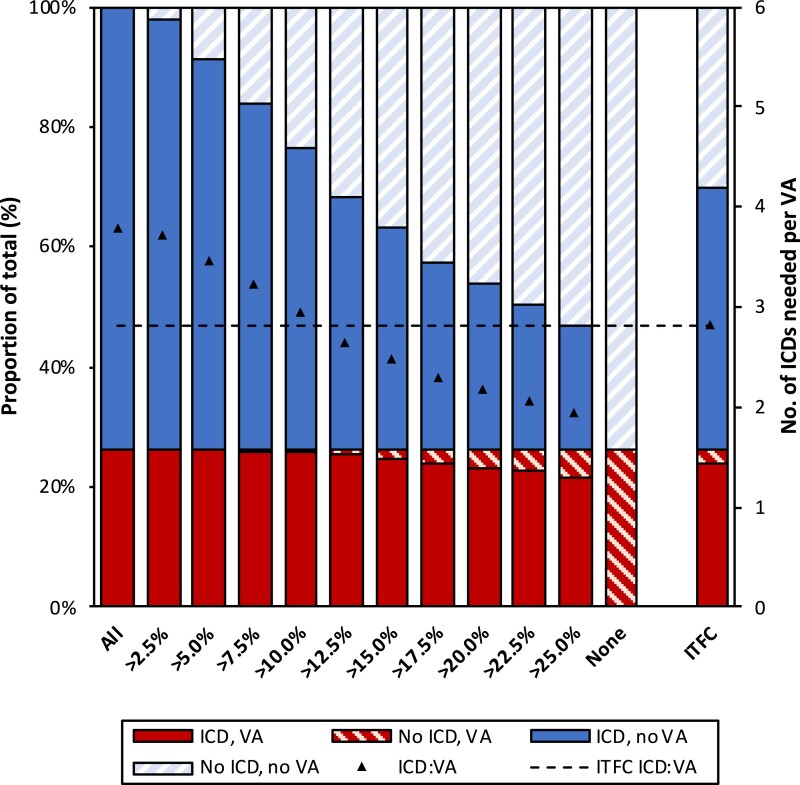Figure 3.
Outcomes of patients associated with model-based implantable cardioverter-defibrillator implantation thresholds. The implications of implanting an implantable cardioverter-defibrillator in all (left bar) or none (second-to-right bar) of the patients are shown, as well as the implications of treating all patients as per International Task Force Consensus Statement (far right bar). The rest of the bars show the impact of using different implantable cardioverter-defibrillator placement thresholds based on the risk calculated by our model. Each bar represents the complete cohort (n = 528) and colour coding represents the proportion of patients experiencing sustained ventricular arrhythmia (red) or absence thereof (blue) as well as the placement (solid colours) vs. the non-placement (striped colours) of an implantable cardioverter-defibrillator. The black triangles represent the number of implantable cardioverter-defibrillators needed to protect one patient developing ventricular arrhythmia, with a horizontal dotted line for the reference value (i.e. treatment as per International Task Force Consensus Statement). Left y axis denotes proportion of patients (corresponding to the colour coding); right y axis denotes the number of implantable cardioverter-defibrillators needed to protect one patient (corresponding to the black triangles). ICD, implantable cardioverter-defibrillator; ICD:VA, ratio of implantable cardioverter-defibrillator placements required to protect one patient developing ventricular arrhythmia; ITFC, International Task Force Consensus Statement.

